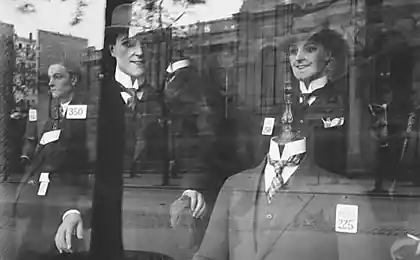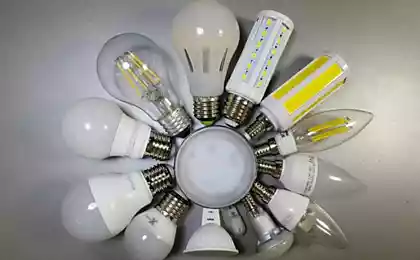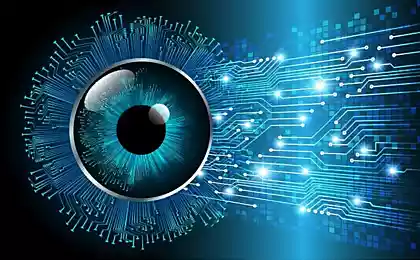511
The coming revolution in lighting: scientists have created a white laser
Lasers are not new technology in science. They were developed in the 1960-ies of the last century. However, the only thing that has been scientist, so it is to create a white laser. Was not possible until recently. A team of researchers from Arizona University have shown that semiconductor lasers capable of emitting light over the entire range of the visible spectrum, providing all the colors needed to create a white laser beam.
The newly developed lasers consist of three arranged parallel sheets of semiconductors, each of which had a thickness of only several microns. Each of these leaves can emit one of the three basic colors red, green and blue. Depending on settings, they are able to create any color of the spectrum. When the proper combination and connection of all three rays, these semiconductors can also emit the white laser beam. The results of these studies were published in the latest issue of the scientific journal Nature Nanotechnology.
Scientists say that this achievement is not just another successful laboratory experiment. White laser can find a very wide practical application. The lasers themselves are much more energy efficient even more than the LEDs, so at least in theory, lasers can be used to create new classes of lighting and display systems (laser displays).

Moreover, it is noted that at the time, as other groups of scientists, for example, from Sandia national laboratories, was crossed laser beams to obtain white light using different laser systems, the new technology allows it to fit all necessary equipment inside a single block, which only increases the prospects for the use of lasers for lighting and development of new display technologies.
In addition, the white laser can be used in the field of optical communication, which is sometimes called the technology Li-Fi, where information is encoded and contained in the ultrahigh frequency light that illuminates the room. To date, such systems have required the use in buildings led light, however, the team of the University of Arizona suggests that due to the lasers, this technology can be made even more perfect by increasing the speed of data transmission on such communication channels from 10 to 100 times.
Of course, looking ahead is early. Scientists have to overcome a lot of trials before lasers can become an integral and regular part of our lives. However, the achievement of Arizona scientists worthy of mention, and we hope that the development in this direction will continue. published
P. S. And remember, just changing your mind — together we change the world! ©
Source: vk.com/wiki_inventions?w=wall-56414092_23623&z=photo-56414092_375235773%2Falbum-56414092_00%2Frev
The newly developed lasers consist of three arranged parallel sheets of semiconductors, each of which had a thickness of only several microns. Each of these leaves can emit one of the three basic colors red, green and blue. Depending on settings, they are able to create any color of the spectrum. When the proper combination and connection of all three rays, these semiconductors can also emit the white laser beam. The results of these studies were published in the latest issue of the scientific journal Nature Nanotechnology.
Scientists say that this achievement is not just another successful laboratory experiment. White laser can find a very wide practical application. The lasers themselves are much more energy efficient even more than the LEDs, so at least in theory, lasers can be used to create new classes of lighting and display systems (laser displays).

Moreover, it is noted that at the time, as other groups of scientists, for example, from Sandia national laboratories, was crossed laser beams to obtain white light using different laser systems, the new technology allows it to fit all necessary equipment inside a single block, which only increases the prospects for the use of lasers for lighting and development of new display technologies.
In addition, the white laser can be used in the field of optical communication, which is sometimes called the technology Li-Fi, where information is encoded and contained in the ultrahigh frequency light that illuminates the room. To date, such systems have required the use in buildings led light, however, the team of the University of Arizona suggests that due to the lasers, this technology can be made even more perfect by increasing the speed of data transmission on such communication channels from 10 to 100 times.
Of course, looking ahead is early. Scientists have to overcome a lot of trials before lasers can become an integral and regular part of our lives. However, the achievement of Arizona scientists worthy of mention, and we hope that the development in this direction will continue. published
P. S. And remember, just changing your mind — together we change the world! ©
Source: vk.com/wiki_inventions?w=wall-56414092_23623&z=photo-56414092_375235773%2Falbum-56414092_00%2Frev























